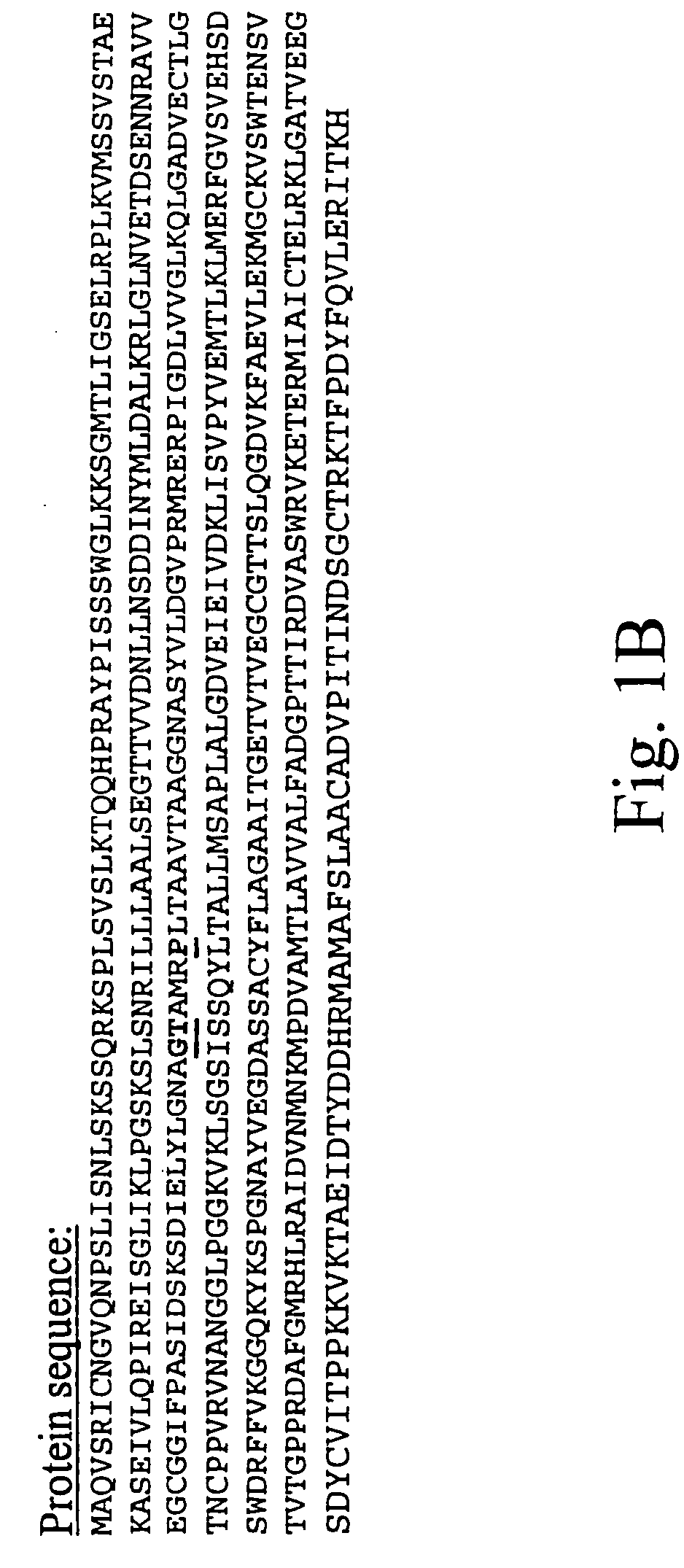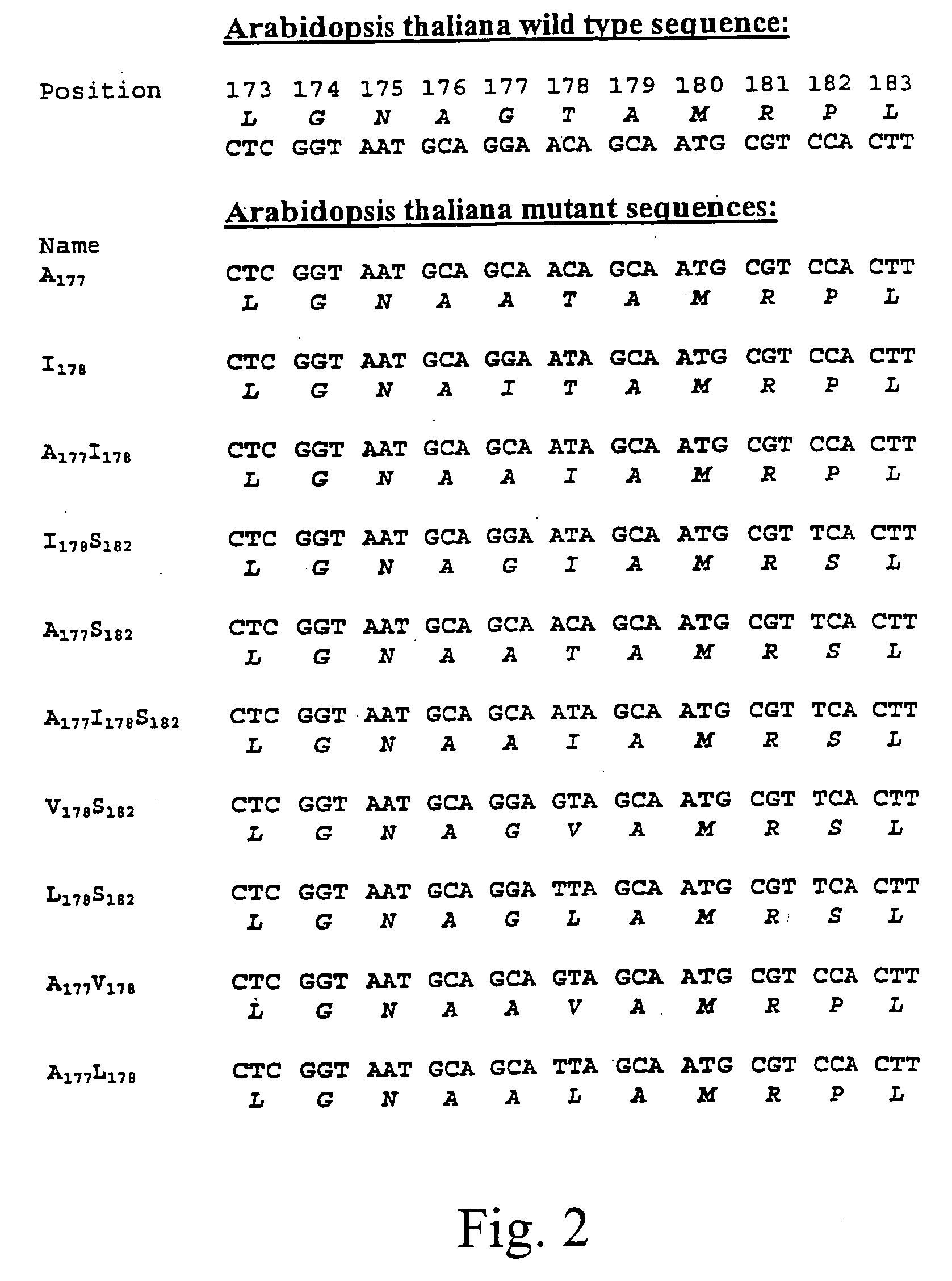Non-transgenic herbicide resistant plants
a non-transgenic, herbicide-resistant technology, applied in the direction of transferases, enzymology, biochemistry apparatus and processes, etc., can solve the problems of many complications and problems, abnormally low growth and development of plants, and the enzyme produced by the mutated epsps gene significantly lower enzymatic activity than the wild-type epsps
- Summary
- Abstract
- Description
- Claims
- Application Information
AI Technical Summary
Benefits of technology
Problems solved by technology
Method used
Image
Examples
Embodiment Construction
[0039] The present invention is directed to a non-transgenic plant or plant cell having a mutation in the EPSPS gene, which plant has increased resistance or tolerance to a member of the phosphonomethylglycine family and which plant exhibits substantially normal growth or development of the plant, its organs, tissues or cells, as compared to the corresponding wild-type plant or cell. The present invention is also directed to a non-transgenic plant having a mutation in the EPSPS gene, which plant is resistant to or has an increased tolerance to a member of the phosphonomethylglycine family, e.g., glyphosate, wherein the mutated EPSPS protein has substantially the same catalytic activity as compared to the wild-type EPSPS protein.
[0040] The present invention is also directed to a method for producing a non-transgenic plant having a mutated EPSPS gene that substantially maintains the catalytic activity of the wild-type protein irrespective of the presence or absence of a herbicide of ...
PUM
| Property | Measurement | Unit |
|---|---|---|
| concentration | aaaaa | aaaaa |
| concentration | aaaaa | aaaaa |
| concentration | aaaaa | aaaaa |
Abstract
Description
Claims
Application Information
 Login to View More
Login to View More - R&D
- Intellectual Property
- Life Sciences
- Materials
- Tech Scout
- Unparalleled Data Quality
- Higher Quality Content
- 60% Fewer Hallucinations
Browse by: Latest US Patents, China's latest patents, Technical Efficacy Thesaurus, Application Domain, Technology Topic, Popular Technical Reports.
© 2025 PatSnap. All rights reserved.Legal|Privacy policy|Modern Slavery Act Transparency Statement|Sitemap|About US| Contact US: help@patsnap.com



